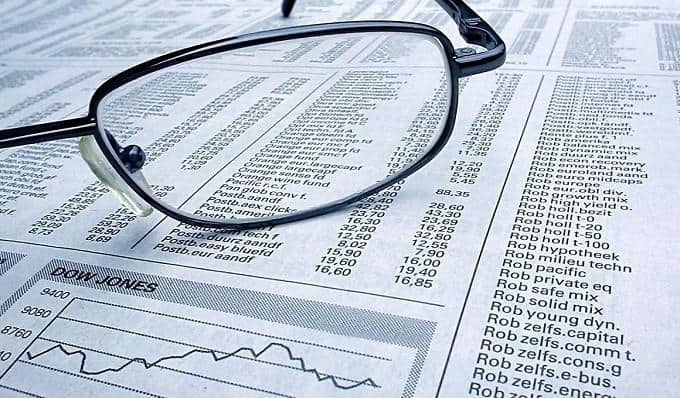The financial market is a platform where transactions are made with securities such as stocks, bonds, bills, checks and many others. A large share of the market is occupied by actions with shares.
To make money on these low-risk assets, you need to have knowledge of the basic concepts of their liquidity. The more clearly a trader will have an idea about this indicator, the more likely he is to receive a stable income.
The concept of liquidity comes from the English word “liquid“, literally translated as “fluid”. Liquidity conveys the “fluidity” of an asset and indicates its ability to be sold at market prices as soon as possible. At the same time, other control levers, including discounts, should not be involved. In other words, you can quickly get out of liquid assets into money, but not out of illiquid assets.
Liquidity criteria
The following parameters indicate the liquidity of a stock:
- Average daily trading volume. Shows the number of securities that pass through the market during a given time period. A high rate indicates an easy sale and purchase of shares. This indicates good liquidity and wide demand.
- The average range of the difference between the lowest and highest price scale for the past time interval.

The speed of their implementation largely depends on the size of the package of securities. Stocks that are sold in bulk are more liquid. Packages of 25% or more can already influence the activities of the company, and they can safely be called blocking.
But if a controlling stake of more than 50% of the shares is owned by several persons, then the owner of 25% of the Central Bank can safely make decisions on the management of the company.
Liquidity largely depends on the issuer of securities. In the Russian Federation, the most liquid stocks are from a series of “blue chips”. These include RAO UES, OJSC Gazprom, JSC Norilsk Nickel and others. Also, bills of Sberbank and OAO Gazprom have good “fluid” abilities.
The liquidity of shares is expressed in several indicators:
- width (spread value);
- depth (number of orders at an acceptable cost);
- speed of execution of the largest market order;
- elasticity (the time interval required for the market to recover after the order is executed).
Shares can be:
- highly liquid;
- conditionally liquid;
- illiquid.
Highly liquid assets are in circulation on stock exchanges and trading systems. Conditionally liquid are of interest to investors, but are not quoted on stock exchanges. Illiquid assets are in low demand due to the poor financial condition of the issuer. If the company is little known, then its proposals do not reach a wide range of potential investors.
How liquidity affects investor income
The level of liquidity of shares has a direct impact on the profitability and capital structure. It is important for a trader to know that the high volatility of stocks reduces this indicator. It will take much longer to sell or buy such shares. In this situation, you should increase your reserves, and if necessary, pay for liquidity. This should be done even in a situation where the investment yields less return than it could.
How to find liquid stocks
Liquid stocks are visible on such indicators as the speed of turnover in the market, the volume of transactions made with it, the number of interested participants and, in general, the number of those directly involved in transactions. To view the liquidity of a company, you should pay attention to the following indicators:
- financial stability of the company;
- profitability as measured by its consistency and continuous flow;
- existing demand for services and goods;
- prospects for further progress and clear development forward;
- Available stable spread
An increase in each of these indicators affects the level of liquidity of shares and its growth. When the question arises of modernizing production or expanding the range of goods / services, the activity of stock speculators increases. They will buy shares and inevitably increase their liquidity.

Liquidity directly depends on the spread range. The larger the value between prices, the more liquid the shares. It is listed on the market and is in great demand. It is sold out instantly, so it is important to be aware of these subtleties so as not to be left with a small gain from the transaction.
Liquidity assessment is also carried out with the help of fundamental analysis. The issuer is studied thoroughly. Its financial statements are considered and solvency is assessed. Market stability and prospects, as well as a quantitative analysis of various types of indicators, will indicate stable liquidity of shares or their poor quotation.
Illiquid shares have a wide spread. Buying them, there is a high risk of losses. For example, a purchase of shares was made at a high price, which significantly exceeds the market price. In the process of implementation, most of the funds are simply lost. They are easy to buy, but impossible to sell at a bargain price. We need tight deadlines for selling securities and fixing profits. Investors can sell shares at a loss.
In the public domain there may be information that does not correspond to the realities and the state of affairs. The risk of selection error is very high. To avoid risks, investors diversify their portfolio according to the standard scheme. Losses are minimized by selling so many percent of the assets to recoup the costs of their purchase. Let the other part remain in the portfolio. It is she who is able to bring a net profit. But it is not always the case. It is unforeseen risks that are the main dangerous factor in the sale and retention of assets.
If the price doubles, then the net profit can reach 100%. But a rigorous market analysis is needed. Unfortunately, the risk of bankruptcy cannot be ruled out in liquid stocks. The issuer may go bankrupt, and the shareholder will not receive compensation. The creditor under the legislation of the Russian Federation has priority. His demands are satisfied in the order of the first priority. Minority shareholders can only receive compensation if there are some amounts left after the debt obligations are paid off.
It is easier to make money on liquid stocks than on low-liquid ones. But even here it is necessary to calculate the risks and losses. The advantages of the former are their guaranteed stability and income. At the same time, there is always potential demand and profit.














